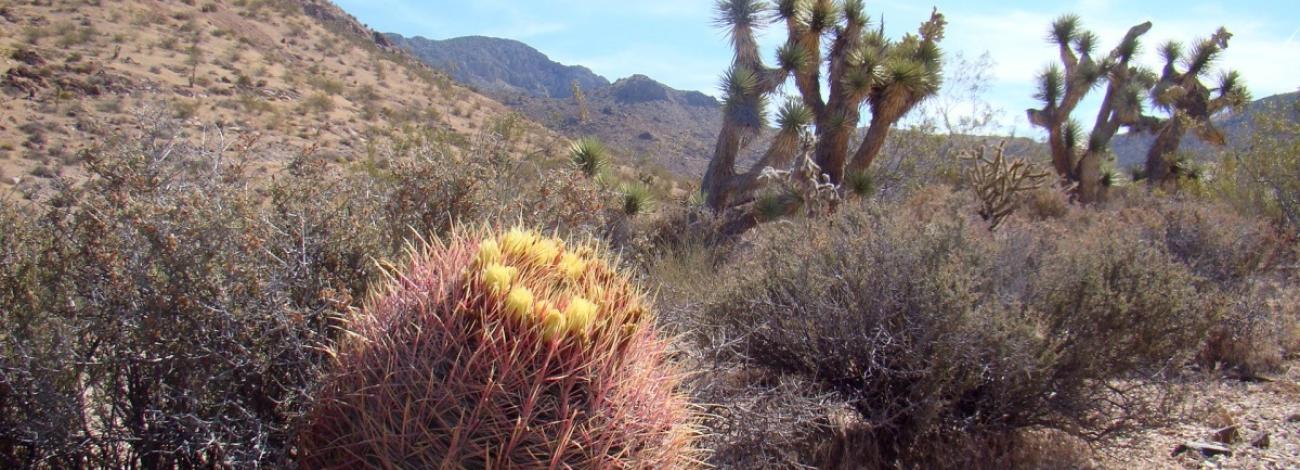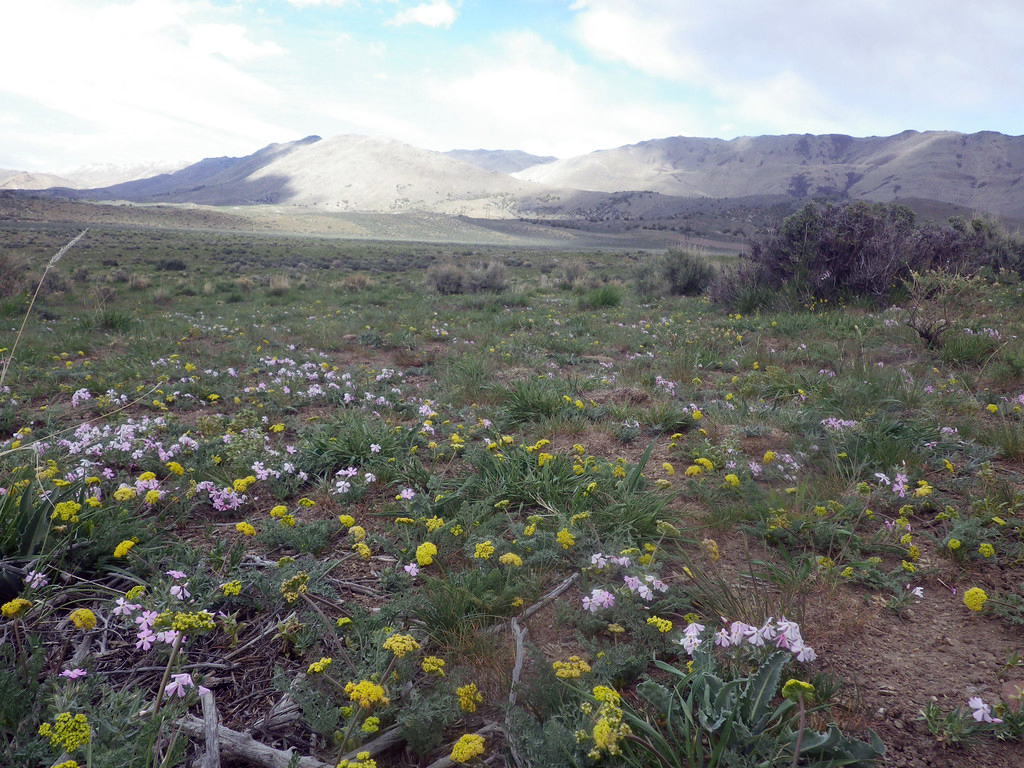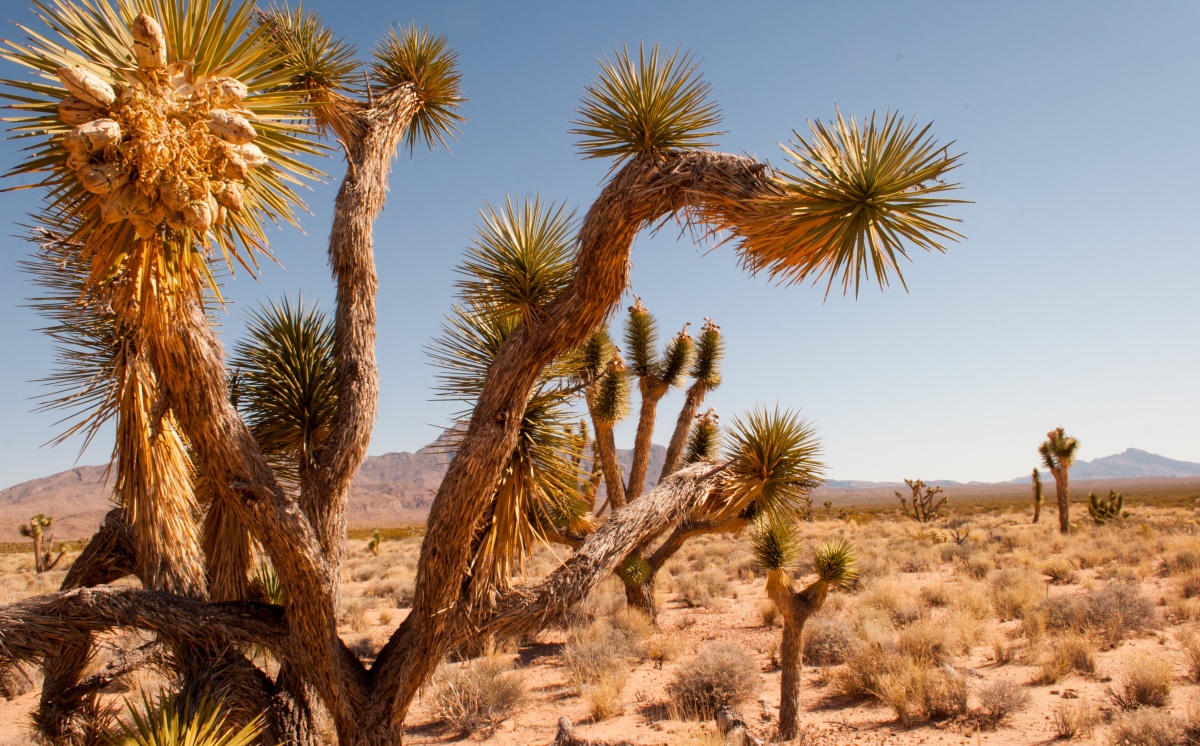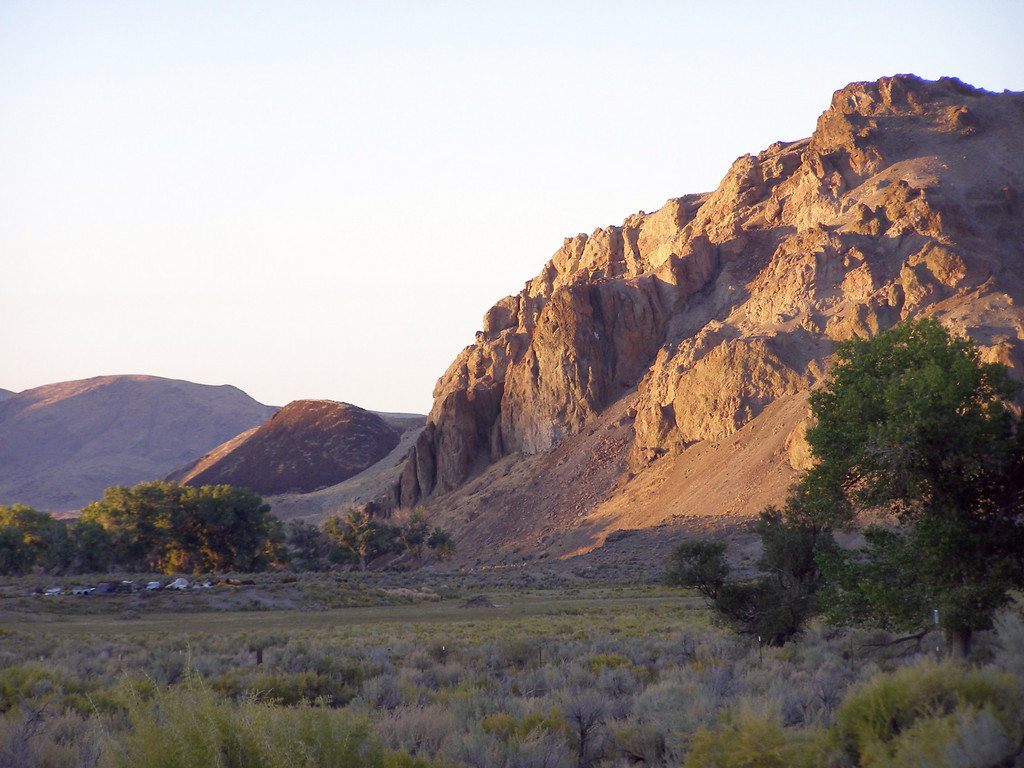
BLM NEVADA NATIVE PLANTS PROGRAM
BLM Nevada manages native plant communities across three ecoregions. (See Omernik Level III at https://pubs.usgs.gov/tm/04/c03/virtual_CD/useco.pdf). An ecoregion is defined by its environmental conditions, climate, landforms, and soils. These characteristics are reflected in the regions native plant communities and similar ecosystem services they provide (such as sage grouse habitat, rangelands for livestock grazing, and pinyon juniper woodland that provide pine nut harvests and Christmas trees).
In Nevada, these include the Northern Basin and Range, the Central Basin and Range and the Mojave Basin and Range. Together the Northern and Central Basin and Range are commonly called the Great Basin, which spans northern Nevada, and parts of California, Oregon, Idaho and Utah. The Great Basin is considered a cold desert because winter temperatures are generally well below freezing.

The Mojave Basin and Range (also called the Mojave Desert) is considered warm desert because winter temperatures are milder and generally near or above freezing. This difference has a profound effect on the plant species in each ecoregion. In south central Nevada, the transition between the Great Basin and Mojave ecoregions is marked by a shift in the presence of creosote bush (Larrea tridentata) and Joshua tree (Yucca brevifolia) two dominant species that primarily in the Mojave Desert in the south and sagebrush species (Artemisia sp.) which are dominant in the Great Basin to the north.
Across the state, nested within these ecoregions BLM manages 1,608,417 acres of Areas of Critical Environment (ACEC’s), and 1,773,719 acres of National Landscape Conservation Areas (NLCA’s).

In both the Great Basin and Mojave Desert, invasion by nonnative annual grasses is a major threat to public lands because they compete and exclude many native species and they readily carry wildfire. In Nevada, the Plant Conservation Program works to secure the reduce or eliminate impacts on native plant communities caused by fire, invasive nonnative plants, and climate change in both the Great Basin and Mojave by identifying and developing genetically appropriate native seed need to successfully implement for restoration, rehabilitation and reclamation projects .

Despite being the driest state in the Union, Nevada is floristically diverse. In 2008, the Nevada Natural Heritage Program compiled a single vegetation map for Nevada. Across the state there are more than 250 different plant community alliances and more than 500 plant community associations. Images and information for these plant community alliances and associations can be found in the Nevada Natural Heritage program website.
